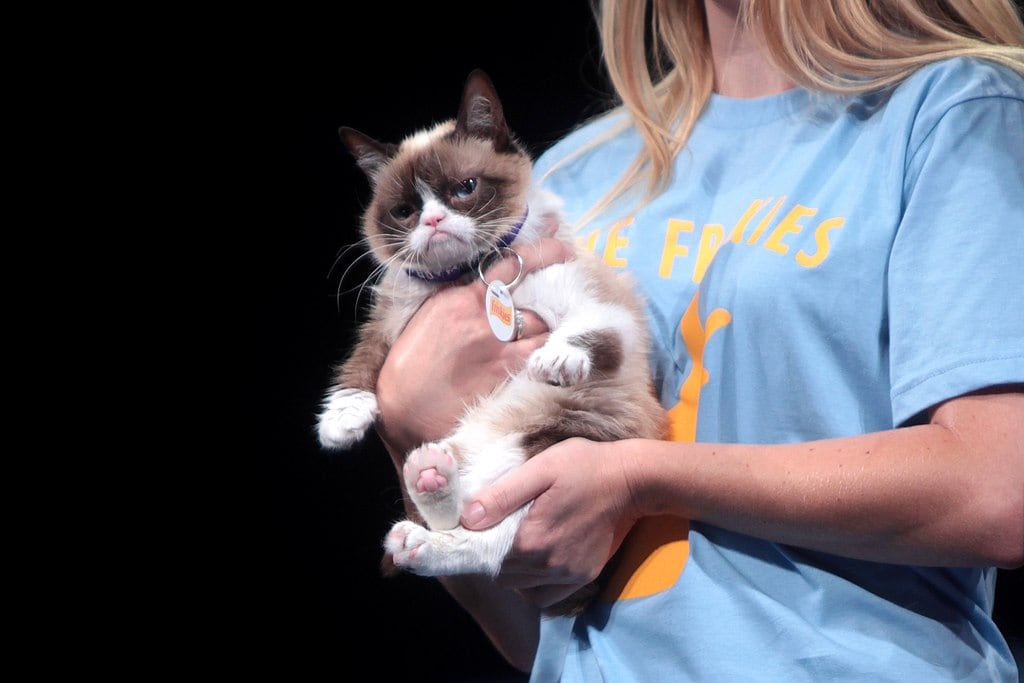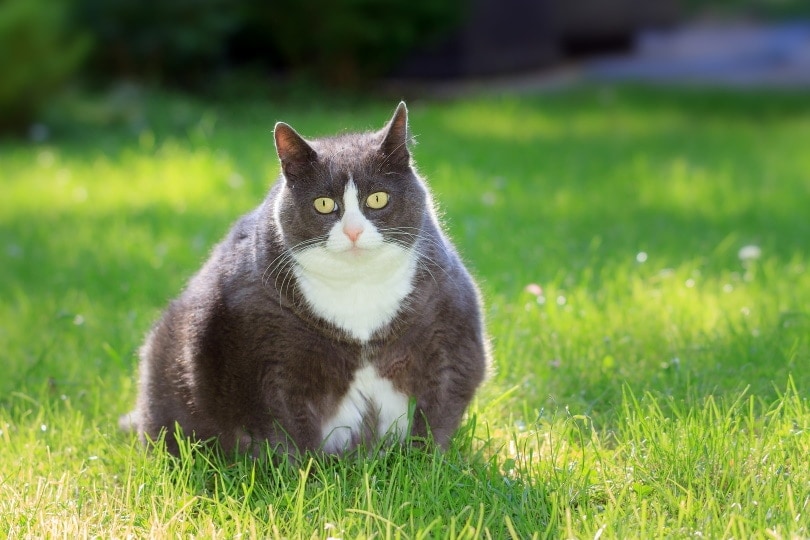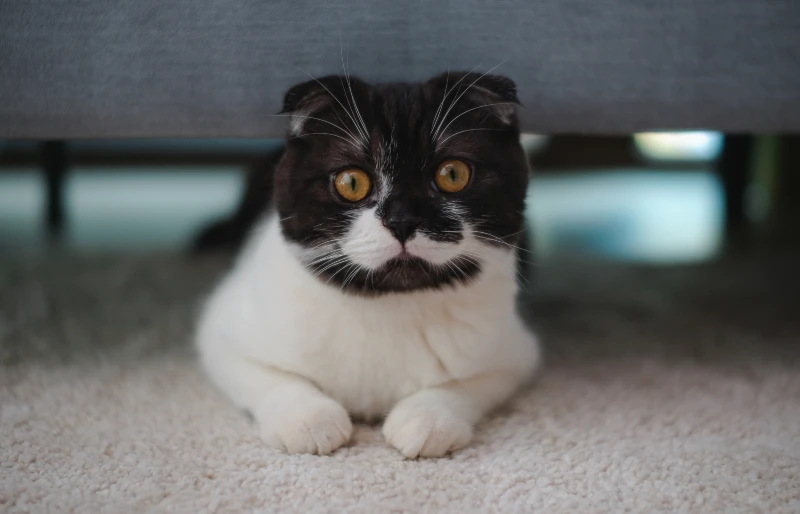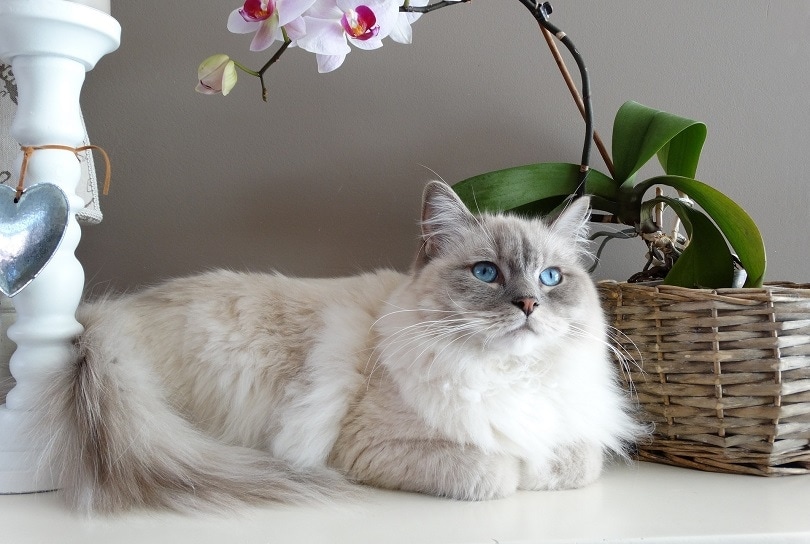What Kind of Cat Was Grumpy Cat? Famous Cat Breeds Revealed
Updated on

10 years ago, on April 4, 2012, an adorable little kitten was born in Arizona.1 Tardar Sauce, descended from a calico mother and a putative blue and white tabby father, has captured the hearts of millions of fans around the world and has become a true icon on social media. Besides, if that name means nothing to you, it’s probably because you’re more familiar with her meme name, which is none other than Grumpy Cat!
The popular Grumpy Cat, who was actually a female cat, became an internet star just months after she was born. Over the years, thousands of snaps of her scowling face have been posted on her official accounts, often accompanied by a phrase such as “There’s not enough coffee in the world to get me to rise and shine” or “I had fun once, it was awful”. Sadly, the internet’s most beloved peevish cat died of complications from a urinary tract infection (UTI) in May 2019.
But what “kind” of cat was Grumpy Cat, what was the reason behind her perpetual disdainful pout? The short answer is that Grumpy Cat was a Domestic Shorthair with feline dwarfism.
Grumpy Cat Was Suffering from Feline Dwarfism
The tiny Grumpy Cat was born to regular-sized domestic shorthaired parents, namely a calico mother and a tabby father. However, her unique face was due to a genetic condition called feline dwarfism. Additionally, she suffered from another congenital condition called underbite, which is characterized by misalignment of teeth, or malocclusion. As you can see, the reasons behind her successful career as an internet sensation were far from glamorous.
What Is Feline Dwarfism?
Feline dwarfism, or achondroplasia, is a genetic mutation that results in the abnormal development of bones and cartilage. Thus, feline dwarfism leads to stunted growth in affected felines and is characterized by short, sturdy legs, an abnormally large head, and underbite.
Dwarf cats can lead happy, full lives and are therefore attractive to some breeders due to their very tiny size and lovable characteristics, but this genetic condition can also lead to medical issues.
Indeed, depending on the severity of the condition, many cats with dwarfism are at greater risk of developing diseases that affect their quality of life, such as arthritis and obesity.

Are There Other Cat Breeds Affected by Dwarfism?
While Grumpy Cat’s dwarfism was not the intentional result of crossbreeding between cats with the same mutation (her parents were normal-sized), this trait is selectively encouraged in certain breeds, such as the Munchkin.
Thus, despite the adorable appearance of these short-legged cats, selective breeding to promote feline dwarfism is controversial. Indeed, these breeds often see their quality of life impacted because they develop physical malformations that can lead to painful health problems. For example, these cats often suffer from arthritis caused by the pressure of their weight on their too-short and arched legs.
Another cat breed prone to abnormal bone and cartilage development is the Scottish Fold. Indeed, these cats tend to suffer from osteochondrodysplasia, which leads to abnormal growth of their limbs, putting them at risk of a short and painful life.

Bottom Line
Grumpy Cat is arguably one of the most iconic cats of the past decade and her death saddened millions of fans. However, the popularity of this tiny cat has sparked some controversy, as this scowling feline actually suffered from dwarfism and an underbite. Nevertheless, these genetic conditions were not the result of selective breeding to encourage this trait, which is not always the case. Indeed, dwarfism is a trait that is encouraged in some breeds, as it gives them a cute and adorable appearance, to the detriment of their health and quality of life.
In short, beware of the hype created by social media for certain cat breeds. Luckily, according to her human parents, Grumpy Cat didn’t seem to be suffering from her condition and was able to lead a – relatively – normal cat life.
See also:
Featured Image Credit: Grumpy Cat (Gage Skidmore from Peoria, AZ, United States of America via Wikimedia Commons, CC BY-SA 2.0)











